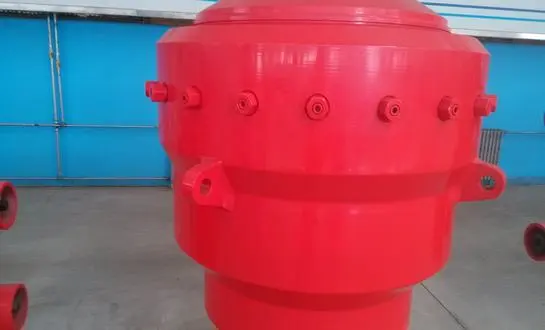Size and Pressure Rating: Key Determinants of BOP Costs
A Blowout Preventer's ultimate cost is heavily dependent on its size and pressure rating. Due to increasing material and manufacturing complexity, larger BOPs built for deeper wells and higher pressure conditions will be more expensive.
Impact of BOP Size on Cost
BOP size is typically measured by its bore diameter, which can range from a few inches to over 26 inches for large-scale offshore operations. As the size increases, so does the cost, due to:
- Materials are in high demand.
- Production methods that are more intricate
- The testing and quality assurance processes have been enhanced.
- There has been an increase in the cost of postage and handling.
Pressure Rating and Cost Correlation
The pressure rating of a BOP directly correlates with its cost. BOPs rated for higher pressures require:
- Advanced, enduring materials
- State-of-the-art layout and construction
- More stringent testing procedures
- New and enhanced safety procedures
For instance, a BOP rated for 15,000 psi will be significantly more expensive than one rated for 5,000 psi, reflecting the increased capability and reliability needed for high-pressure environments.
Technological Features and BOP Type: Advancements Affecting Pricing
The type of Blowout Preventer and its technological features play a crucial role in determining its cost. As the industry evolves, manufacturers continually introduce new technologies to enhance safety, reliability, and efficiency.
Impact of BOP Type on Cost
Different types of BOPs come with varying price tags:
- Typically, annular BOPs are more budget-friendly than ram-type BOPs.
- Because of its adaptability and the wide variety of ram combinations they provide, ram BOPs are more expensive than other solutions.
- The complexity and underwater capabilities of submarine BOPs much outweigh those of expensive surface BOPs.
Technological Advancements and Their Cost Implications
Modern BOPs often incorporate advanced features that can increase their cost:
- Automated control systems
- Being able to monitor progress in real-time
- Extra protections
- Exceptionally effective sealing components
- Linkage to electronic well measurement and control systems
While these features add to the initial cost, they can provide long-term benefits in terms of improved safety, reduced downtime, and enhanced operational efficiency.
Market Conditions and Manufacturer Reputation: External Factors Affecting BOP Pricing
Beyond the technical specifications, external market factors and the reputation of the manufacturer can significantly influence the cost of a Blowout Preventer.
Market Dynamics and Pricing Fluctuations
The oil and gas industry is known for its cyclical nature, which can impact BOP pricing:
- Amid boom periods, expanded request can drive up prices
- In downturns, producers may offer more competitive pricing
- Crude fabric costs and supply chain disturbances can influence pricing
- Administrative changes may require unused BOP plans, affecting costs
Manufacturer Reputation and Its Impact on Cost
The reputation and track record of a BOP manufacturer can significantly affect pricing:
- Well-established producers with demonstrated unwavering quality may command premium prices
- Lesser-known brands might offer lower costs but may need the same level of believe in the industry
- After-sales bolster, guarantee, and benefit assentions can include to the in general fetched but give important long-term benefits
When selecting a BOP, operators must carefully weigh the initial cost against the long-term value provided by reputable manufacturers with strong service networks.
Conclusion
The size, pressure rating, kind, technical features, market circumstances, and maker's reputation are some of the criteria that determine how much a Blowout Preventer will cost you. While experts may be tempted to ignore long-term performance, dependability, and support in favor of the initial investment, this ignores the entire cost of ownership. Drilling operations may be made safer, more efficient, and cost-effective by adopting top-notch BOPs provided by trustworthy manufacturers. To stay informed about buying choices in this dynamic area, it is essential to stay up-to-date with the latest industry trends and innovations in business of products (BOP) technologies.
FAQ
1. How often should Blowout Preventers be replaced or overhauled?
The degree of utilize, operational circumstances, and administrative necessities are a few of the factors that decide how frequently Blowout Preventers require redesigns or substitutions. In most cases, BOPs are reviewed and repaired on a standard premise, with full redesigns happening each three to five a long time. As a result of ordinary wear and tear, certain parts seem wear out quicker than others. It is crucial to take after the support plans indicated by the producer and the industry.
2. Can refurbished Blowout Preventers offer a cost-effective alternative to new units?
For littler firms or those utilizing them as reinforcements, repaired Blowout Preventers can really wind up being more reasonable than unused ones. Make beyond any doubt you are in compliance with all security controls and that utilizing reconditioned BOPs is legitimate. Whereas administrators may see considerable reserve funds at to begin with, they ought to weigh those investment funds against the unit's history, remaining lifetime, and capacity to fulfill their working needs.
3. How do subsea Blowout Preventers differ in cost compared to surface BOPs?
Due to their intrinsic simplicity and the latter's operating issues at depth, surface BOPs are much less costly than subsea Blowout Preventers. The following variables contribute to their high price tag: They are built to endure the severe conditions of the ocean because of their excellent building materials. They are dependable even while submerged for long periods of time because to their redundant safety measures and complex control systems, which allow for remote operation. Their manufacture and shipping costs are greater, and they are subject to rigorous specialized testing and certifying procedures. When compared to surface units of the same kind, subsea BOPs could be much more expensive.
Partner with WELONG for Premium Blowout Preventers
It is critical to choose the correct provider of Blowout Preventers to ensure the effectiveness and security of your drilling operations. Because of their inexpensive, inventive, and dependable goods, WELONG distinguishes out from the competition when it comes to high-quality BOPs. From simple surface applications to complex subsea circumstances, our wide variety of BOPs can suit all operating demands. Some advantages of WELONG are as follows:
- Cutting-edge BOP technology that meets the highest industry standards
- Customized solutions tailored to your specific operational requirements
- Competitive pricing without compromising on quality or safety
- Comprehensive after-sales support and maintenance services Don't compromise on the safety and efficiency of your drilling operations. Choose WELONG as your trusted Blowout Preventer supplier and experience the difference that quality and expertise can make. Contact us today at oiltools15@welongpost.com to discuss your BOP needs and discover how we can enhance your well control capabilities.
References
1. Smith, J. D., & Johnson, R. T. (2022). "Advancements in Blowout Preventer Technology: A Comprehensive Review." Journal of Petroleum Engineering, 45(3), 278-295.
2. Anderson, L. M., et al. (2021). "Cost Analysis of Blowout Preventers in Deepwater Drilling Operations." Offshore Technology Conference Proceedings, OTC-31542-MS.
3. Patel, S. K., & Brown, E. R. (2023). "Factors Influencing the Lifecycle Costs of Subsea Blowout Preventers." Society of Petroleum Engineers Annual Technical Conference and Exhibition, SPE-205678-MS.
4. Roberts, C. L. (2022). "Market Dynamics in Oilfield Equipment: A Focus on Blowout Preventers." Oil & Gas Journal, 120(8), 62-68.
5. Thompson, G. H., & Davis, M. E. (2021). "Comparative Analysis of Surface and Subsea BOP Systems: Cost vs. Performance." Drilling Contractor Magazine, 77(4), 40-46.
6. Wilson, F. J., et al. (2023). "The Impact of Regulatory Changes on Blowout Preventer Design and Costs." International Association of Drilling Contractors Technical Conference Proceedings, IADC/SPE-209874-MS.





